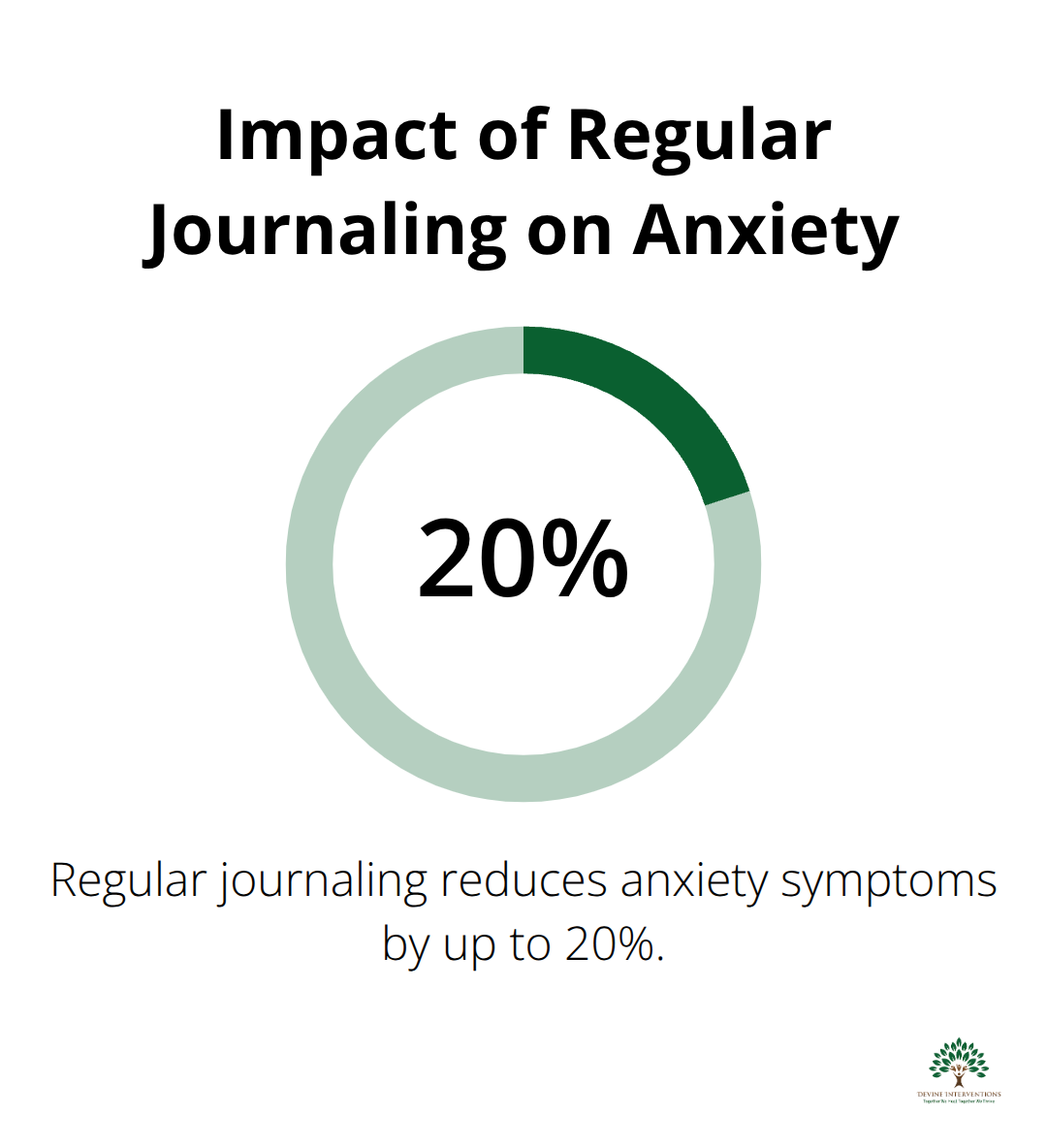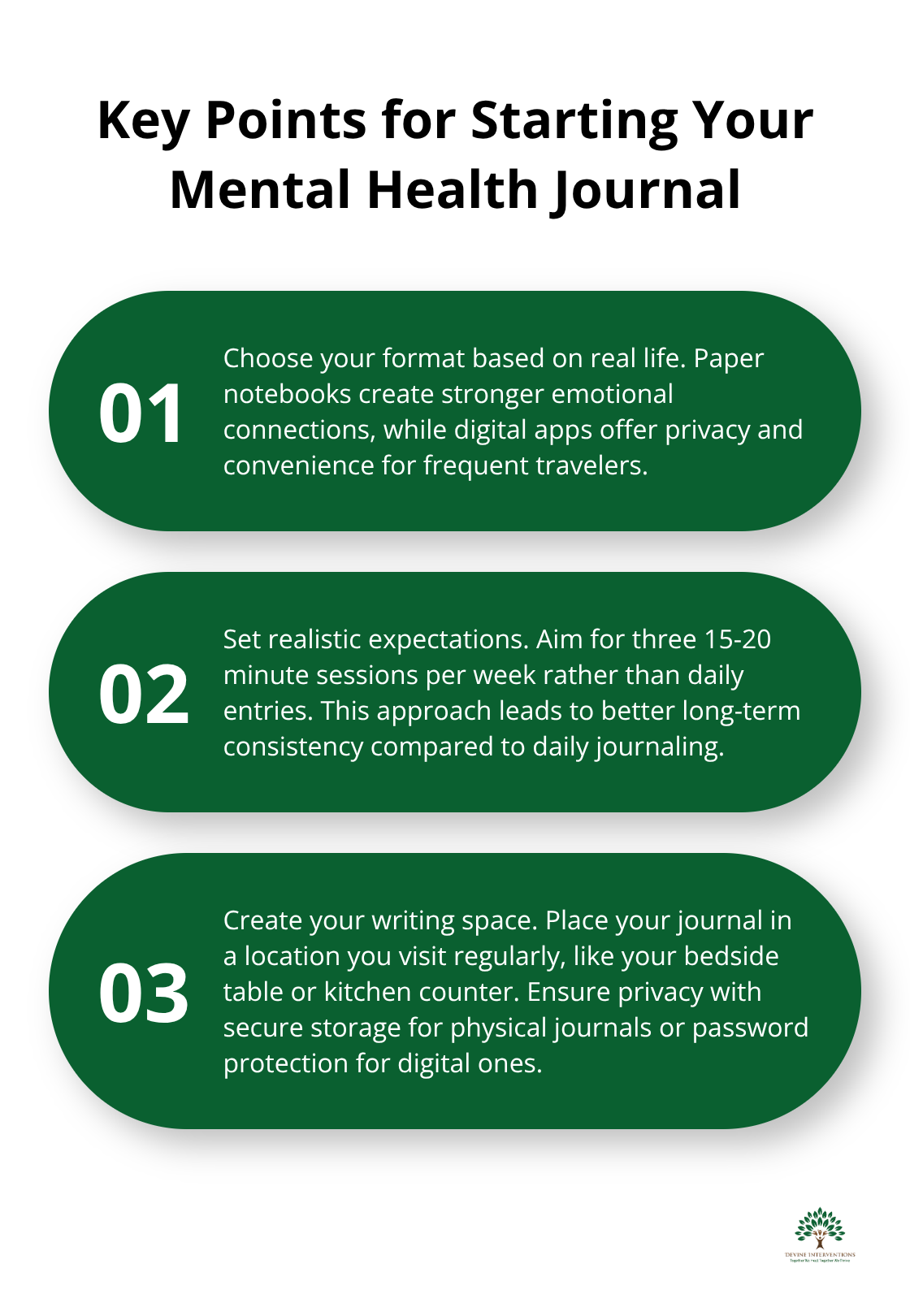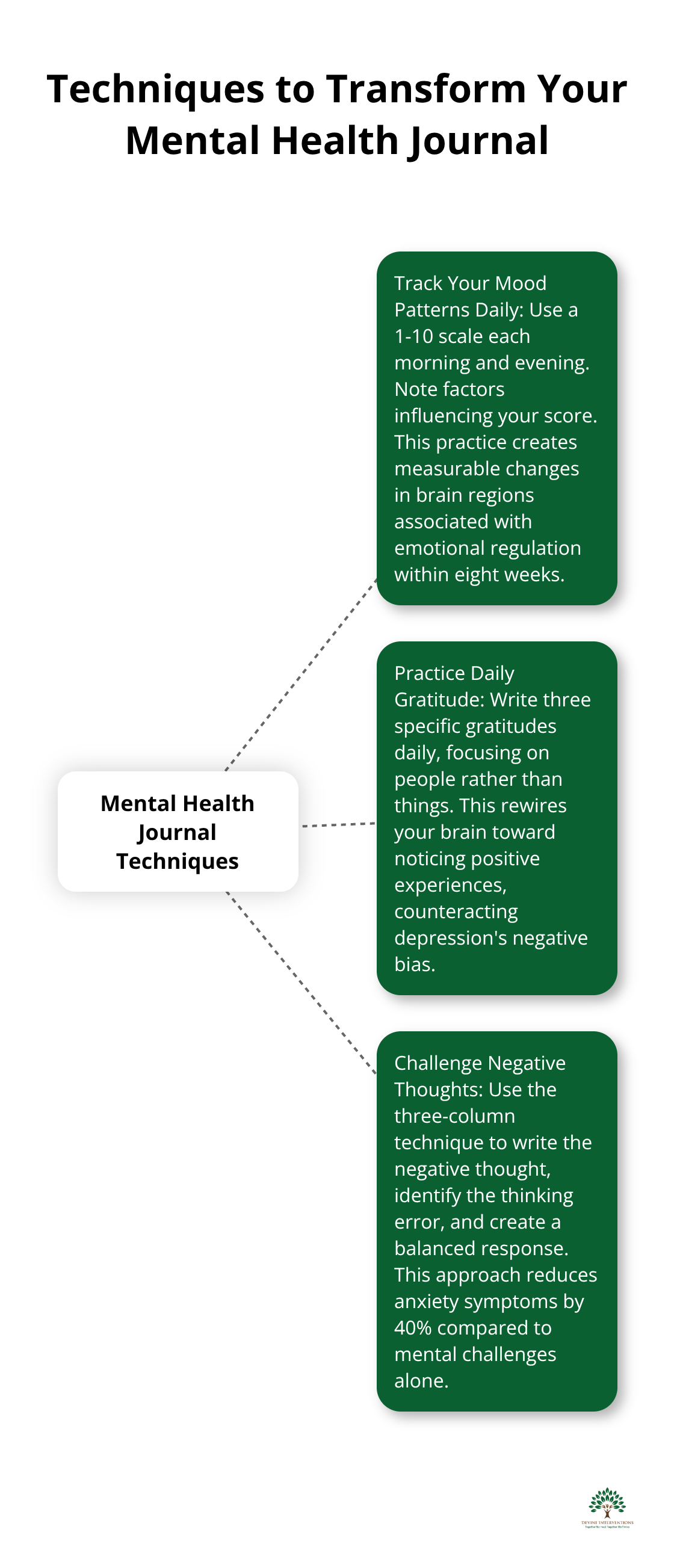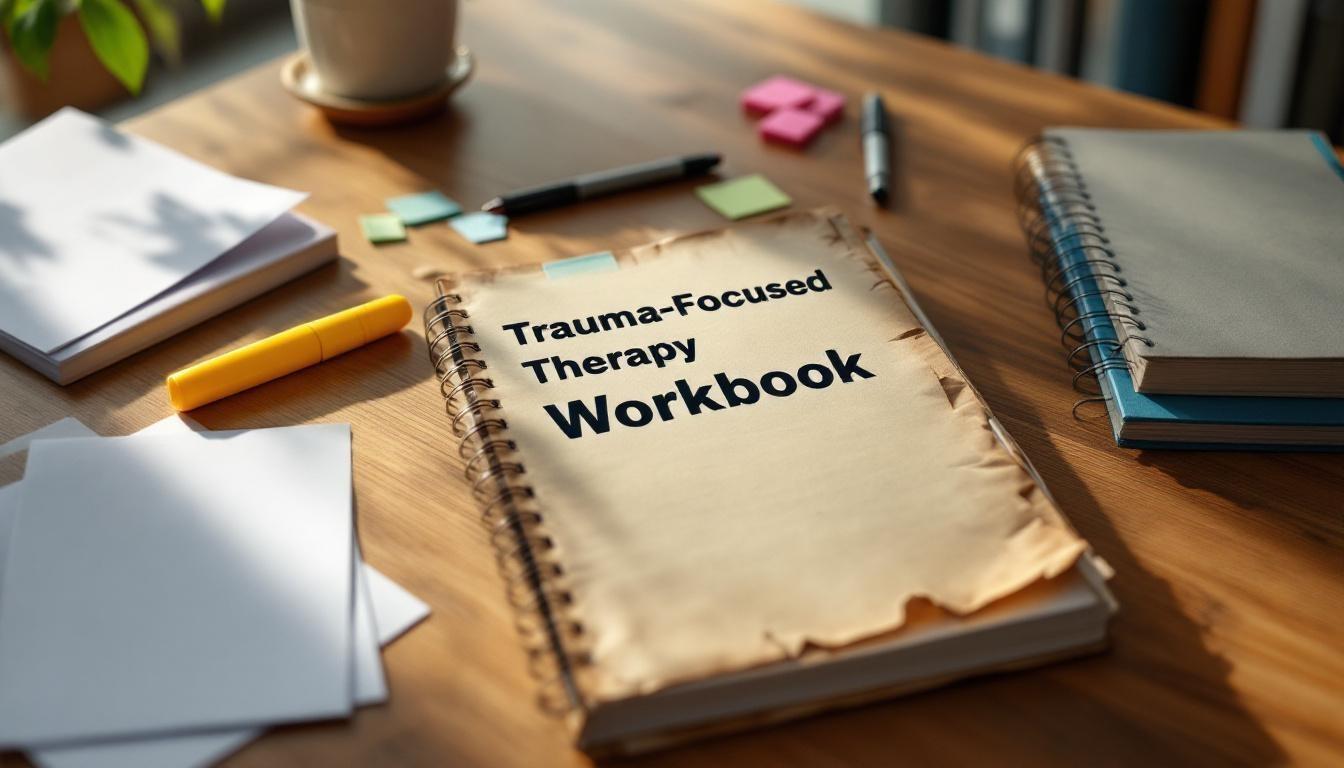Starting a mental health wellness journal can transform how you process emotions and manage stress. Research shows that regular journaling reduces anxiety symptoms by up to 20% and helps identify emotional patterns.
We at Devine Interventions understand that taking the first step toward better mental wellness feels overwhelming. This guide provides practical techniques to begin your journaling journey with confidence.
Why Mental Health Journaling Works
Mental health journaling activates your brain’s natural healing mechanisms through structured emotional processing. Research from the University of Rochester Medical Center found that journaling helps manage anxiety, reduces stress, and aids in coping with depression. The American Psychological Association found that people who write about traumatic experiences show measurable improvements in immune function and blood pressure within six months.
Your Brain on Paper
Writing transforms chaotic thoughts into organized patterns your mind can actually work with. When you put pen to paper, your prefrontal cortex – the brain’s executive center – takes control from your emotional limbic system. This shift literally rewires your neural pathways.
Research demonstrates that labeling emotions through writing reduces activity in the amygdala (your brain’s alarm system). James Pennebaker’s groundbreaking studies at the University of Texas revealed the profound impact of expressive writing on anxiety, depression, and chronic pain. The physical act of writing engages different brain regions than typing, which creates stronger memory consolidation and emotional processing.
Processing Trauma Through Words
Trauma lives in your body until you give it language. Writing creates a safe container for experiences too overwhelming to speak aloud. Veterans Affairs studies show that trauma-focused journaling reduces PTSD symptoms by 40% when practiced consistently for 12 weeks.
The key lies in writing about both facts and feelings – not just what happened, but how it affected you. This dual approach helps your brain integrate fragmented memories into coherent narratives, which reduces their emotional charge over time. Professional support amplifies these benefits significantly (especially when combined with evidence-based therapy approaches).
Now that you understand the science behind journaling’s power, let’s explore how to choose the right tools and establish sustainable habits that work for your unique lifestyle.

What Tools Do You Actually Need to Start
Your journal format matters less than your commitment to consistency. Paper notebooks create stronger emotional connections through the physical act of writing – research shows handwriting enhances creativity and memory through deeper processing and slower pace, activating more brain areas than typing. However, digital apps work better if you travel frequently or prefer privacy through password protection.
Choose Your Format Based on Real Life
Skip expensive leather-bound journals that intimidate you into perfection. A simple composition notebook from any drugstore works just as well as premium options. Research shows that laptop note takers record more notes and words than longhand note takers, making digital options effective for frequent journaling.
Digital users should consider apps like Day One or Journey that offer mood tracking features and automatic backups. These tools provide password protection and cloud storage, which keeps your entries secure across devices.
Set Realistic Expectations
Try three sessions per week for 15-20 minutes each rather than daily entries. Daily journaling often leads to burnout and abandonment. Most people who start with daily goals quit within two weeks, while those who commit to three sessions weekly maintain their practice for months.
Create Your Writing Space
Place your journal in a location you already visit regularly, like your bedside table or kitchen counter. Avoid designating a special area you rarely use – this creates unnecessary barriers to consistency. Privacy remains essential regardless of format, so choose password protection for digital journals or a secure drawer for physical ones.
The tools you select will shape your daily practice, but the techniques you use determine the depth of your mental health benefits.

Which Techniques Transform Your Mental Health Journal
Track Your Mood Patterns Daily
Start mood tracking with a simple 1-10 scale each morning and evening. Note three factors that influenced your score. Harvard Medical School research shows this basic pattern recognition creates measurable changes in brain regions associated with emotional regulation within eight weeks. Track sleep quality, energy levels, and social interactions alongside mood ratings.
After two weeks, review entries to identify triggers like poor sleep before anxiety spikes or social isolation that precedes low mood days. This data reveals patterns your mind misses in the moment.
Practice Daily Gratitude for Brain Chemistry Changes
Write three specific gratitudes daily. Focus on people rather than things. Research shows that gratitude practices can improve emotional well-being and health-related outcomes through brief, low-burden interventions.
Avoid generic entries like “grateful for family.” Instead write “grateful that Mom texted encouragement before my presentation.” This specificity activates different neural pathways and creates stronger positive associations. Research from Robert Emmons demonstrates that gratitude practices literally rewire your brain toward noticing positive experiences (which counteracts depression’s negative bias).
Challenge Negative Thoughts Through Written Analysis
Use the three-column technique: write the negative thought, identify the thinking error, then create a balanced response. Cognitive behavioral therapy studies show this written approach reduces anxiety symptoms by 40% compared to mental challenges alone.
When you write “I always mess up presentations,” identify this as all-or-nothing thinking. Then counter with “I gave successful presentations last month and received positive feedback.” The physical act of writing activates your logical prefrontal cortex, which overrides emotional reactions. Practice this technique during calm moments so it becomes automatic during stress (making it more effective when you need it most).

Final Thoughts
Your mental health wellness journal becomes a powerful ally in your recovery journey when you practice it consistently. Research proves that regular journal entries reduce anxiety symptoms by 20%, improve emotional regulation, and help identify patterns that trigger difficult emotions. These benefits compound over time and create permanent changes in how your brain processes stress and trauma.
Journal work performs best alongside professional mental health support rather than as a replacement for it. The insights you gain through mood tracking, gratitude practices, and thought challenges provide valuable information to share with your therapist or psychiatrist. This combination creates a comprehensive approach to mental wellness that addresses both immediate symptoms and long-term recovery (which accelerates your progress significantly).
We at Devine Interventions understand that sustainable recovery requires multiple tools that work together. Professional support amplifies the benefits you gain from written reflection and helps you process deeper issues while you develop stronger coping strategies. Your mental health wellness journal represents the first step toward comprehensive care that transforms how you manage emotional challenges.







